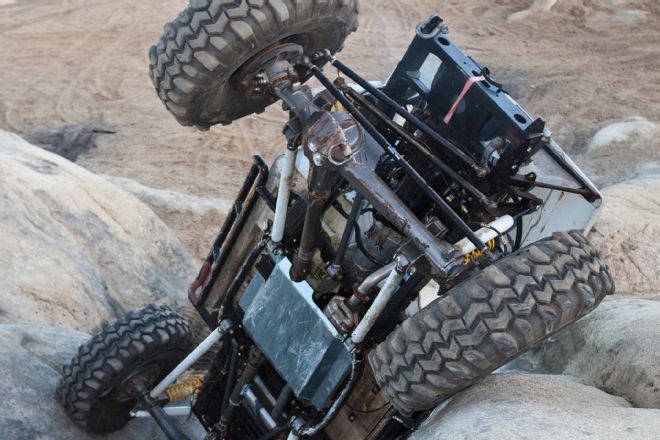
 Harry Wagner
Contributor
Harry Wagner
Contributor
No one likes to be told what to do. Our forefathers dumped tea in Boston Harbor and revolted against England because they were tired of being told what to do. It is ingrained in us. Still, we are going to tell you what to do in this story. Don’t stop reading though. We promise you will thank us when you make it home with all of your fingers still attached to your hand and your rig in one piece.
Sooner or later you are going to get stuck on the trail, and when you do you might not know what to do. You don’t want to learn the hard way when your dealing with winches under tension and 3 tons of steel that doesn’t want to move. So just take the shortcut to Easy Street and follow our advice. Ignoring what we say won’t necessarily lead to certain death, but you might end up having more in common with our forefathers than just a stubborn streak. You could end up with a set of wooden teeth like George Washington.
Top 10 Recovery No-Nos & Alternatives (in No Particular Order)
Don’t hook a strap to suspension or steering components.
Instead use proper hooks, clevis mounts, and receiver hitches.
Don’t hold onto the rollcage.
Instead grab onto the dash bar or your seatbelt or harness.
Don’t use a strap with hooks.
Instead buy a strap with loops and use a screw pin shackle or open hook recovery point.
Don’t load a screw pin shackle sideways.
Instead orient the shackle so the load is on the pin.
Don’t handle your winch cable without gloves.
Instead keep gloves in your vehicle for stacking rocks, winching, and wrenching.
Don’t wrap a winch cable around a tree and hook it back to itself.
Instead use a tree-saver strap.
Don’t use a chain for a dynamic recovery.
Instead use a kinetic rope that can stretch and absorb the energy.
Don’t stick your hand out of your vehicle.
Instead recognize that you are not strong enough to hold up your rig.
Don’t put your hand near the winch fairlead.
Instead keep a safe distance away and have the same person hold the cable and operate the winch.
Don’t just toss heavy items into the back of your vehicle.
Instead strap down all of your items, especially heavy ones like tools and spare parts.
Bonus tip: If you’re recovering a rolled vehicle, be sure it is in park or in gear with the parking brake on before you pull it onto its tires. We have seen many 4x4s pulled back upright only to roll away because no one set the brake, sometime resulting in another rollover.
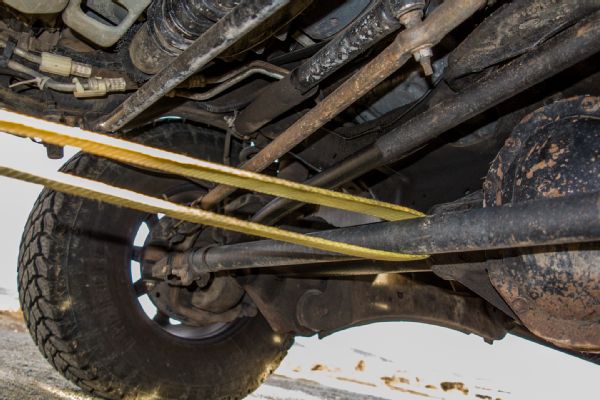
Hooking a strap to a steering or suspension component might get you unstuck, but you might have to replace damaged parts as a result. Plan ahead and get proper recovery points front and rear. A strap through a hitch pin in a receiver hitch works well in the rear.
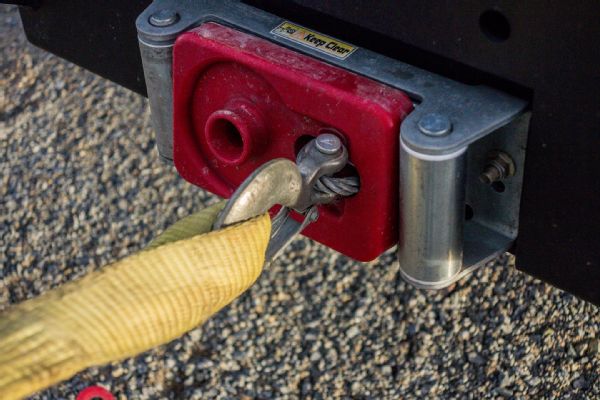
When things go bad, people get desperate and often rush without thinking. Never put a shock load on a winch by hooking a strap to the cable and yanking on it. Doing so risks damaging the internals of the winch.
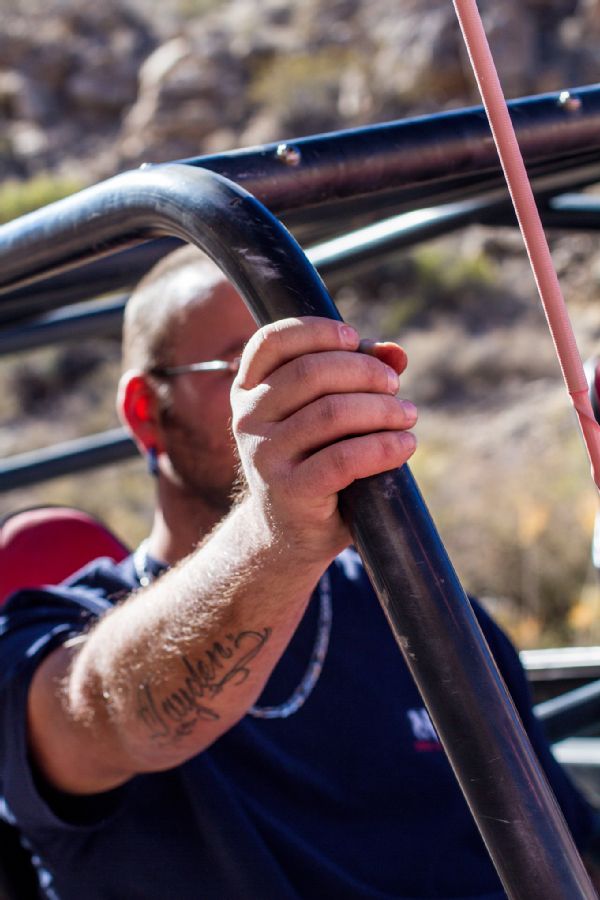
Like your fingers? If so, don’t get in the habit of holding onto the rollcage. When building a cage, you can integrate gussets that double as grab handles, or build a bar off the dash.
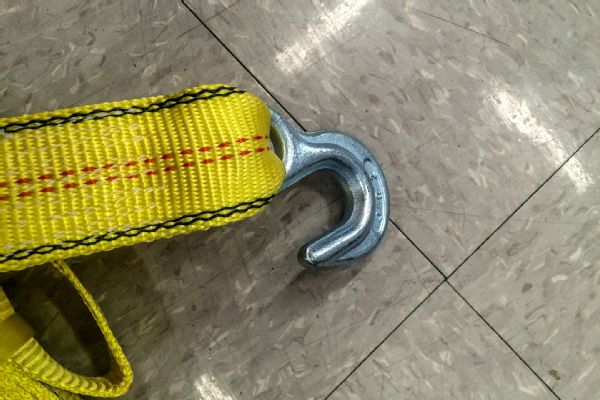
We aren’t even certain why you can still buy straps that have metal hooks on the end. The hooks don’t fit anything, and they are typically poorly cast and break, creating a dangerous projectile.
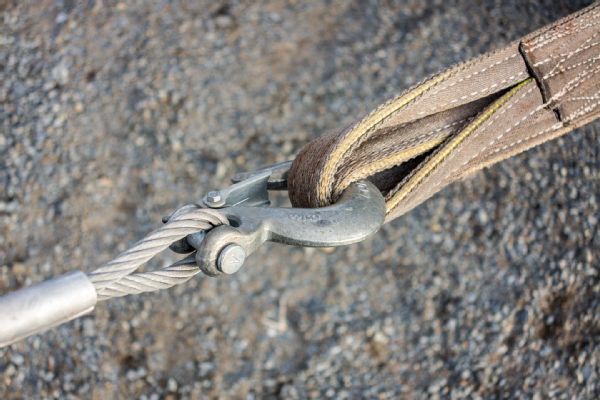
Towstraps, snatch straps, and tree straps should have closed loops at the end, as shown here, not hooks. You can hook to the loops on the strap with a hook, as shown, or a screw pin shackle.
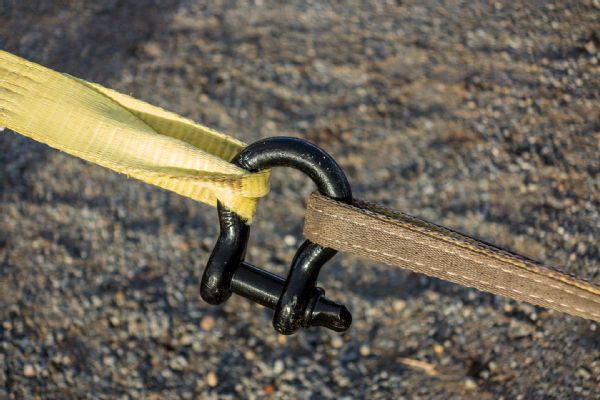
Pulling on each side of a shackle, as illustrated here, can cause the body to bow out and deform. As a result you will not be able to get the pin to screw out of the shackle.
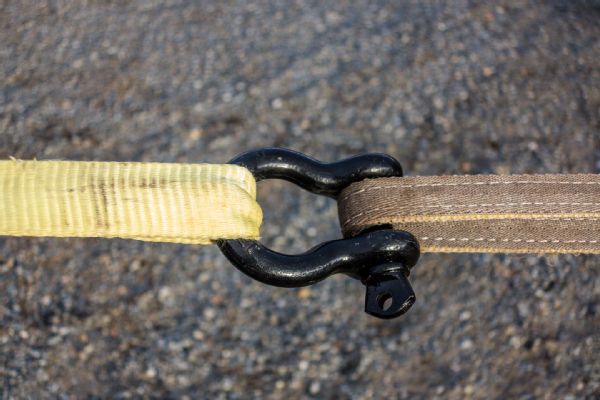
The strap should sit on the top of the screw pin shackle, and the other strap (or clevis point) should be on the pin. We like the pin to be snug, but not overly tight, when performing a recovery. The rest of the time we leave the pin tight so it doesn’t rattle loose on the trail.
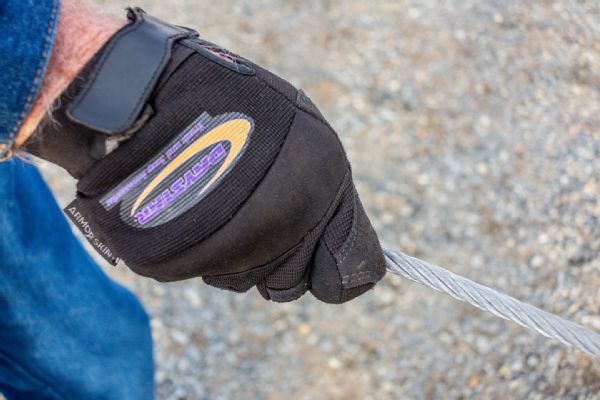
Gloves come in handy for all sorts of things, from wrenching to stacking rocks. You definitely want a glove with a heavy leather palm when handling a steel winch line, otherwise a frayed strand could puncture your skin. Keep a pair of gloves in your truck and get in the habit of using them.

This is what happens when you wrap a winch cable around a tree and then hook it back onto itself. It kinks your winch cable and kills the tree, both of which should be avoided. Use a tree saver, or a longer towstrap if that is all you have.
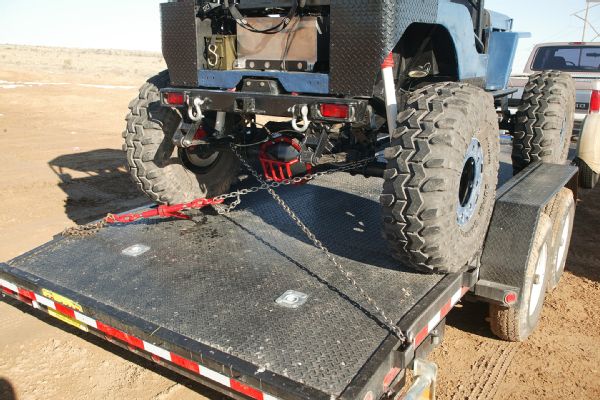
Chains are great for strapping a rig down to the trailer with binders. They are not so great for recovery though, since they will not absorb any energy. We have seen chains do a lot more harm than good when used for extraction.
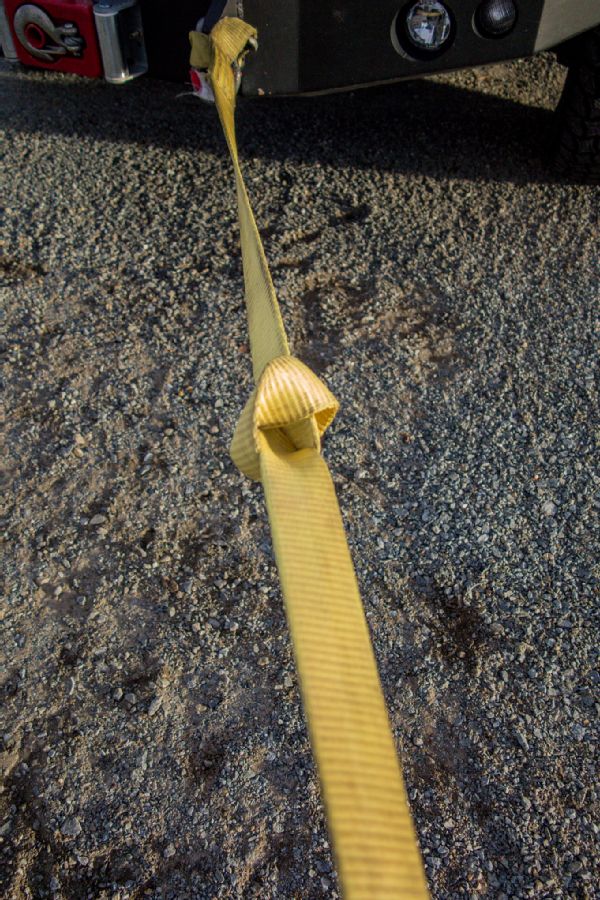
We can’t stress enough that you should take your time and be methodical when getting unstuck. A knot in a snatch strap might not seem like a big deal, but if you pull on this strap the knot will become so tight that you cannot get it out of the strap. The same goes for tying two straps together to lengthen them.
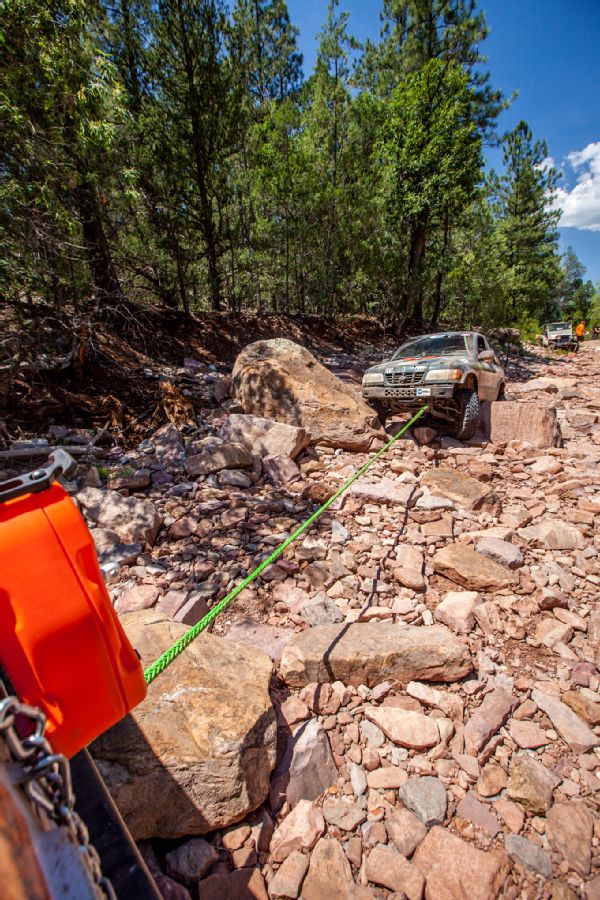
A kinetic recovery rope, such as this one from VooDoo Offroad, stretches to absorb energy and then helps to free the stuck vehicle when it returns to its original length. You can get a running start with these straps, but don’t try this with a normal tow rope or a chain.
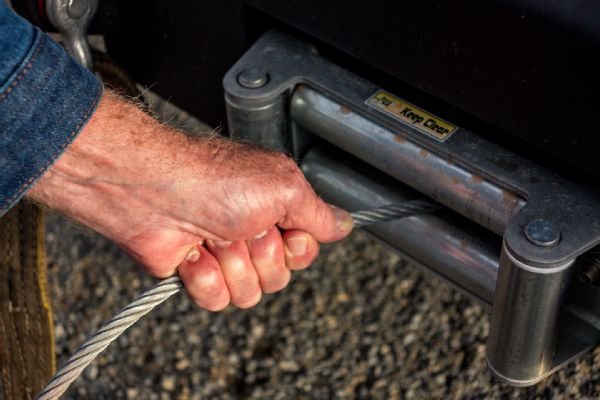
There are a couple of things wrong in this photo. First, the operator is handling a steel winch cable without gloves. Second, his hands are too close to the fairlead and risk getting sucked into the winch. Even when you take your finger off the winch controller there is a lag before the winch stops spooling in.
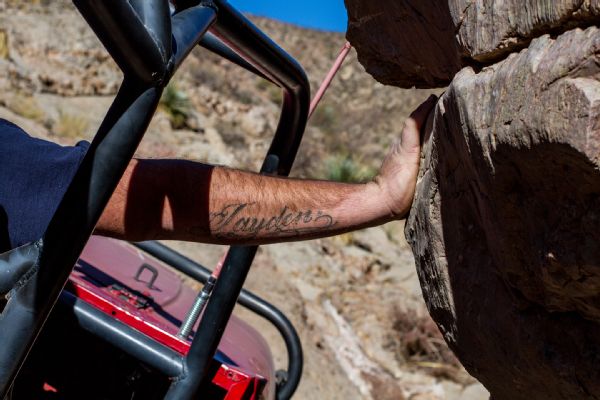
This is a natural reaction, so you have to train yourself and your passengers not to stick their hands and legs out of the vehicle when it gets tippy. You aren’t going to be able to stop the roll—all you are going to do is get hurt.
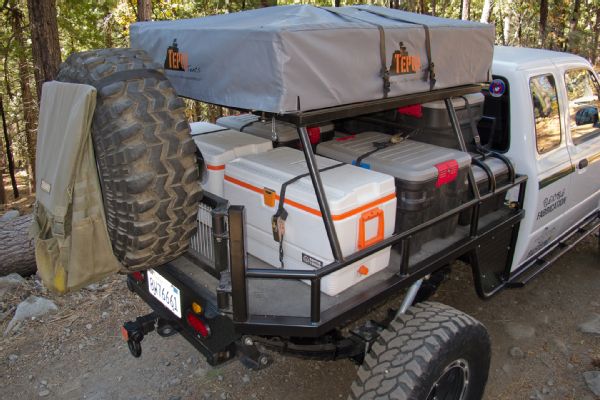
Properly securing your gear isn’t necessarily a recovery issue, but if you don’t strap everything down you will have bigger problems than just recovery. We like to use Mac’s VersaTie anchors and ratchet straps to hold everything in place. Note that if you go to the handles of your cooler you can secure it and still access the contents.
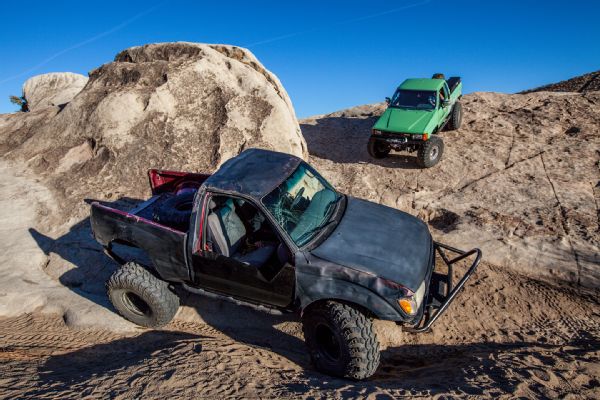
At a minimum you will have a big mess to clean up if your gear is not secured when you roll. Worst case scenario: You getting hit in the head with a fire extinguisher or screw pin shackle and now you are performing first aid in addition to recovering the vehicle.